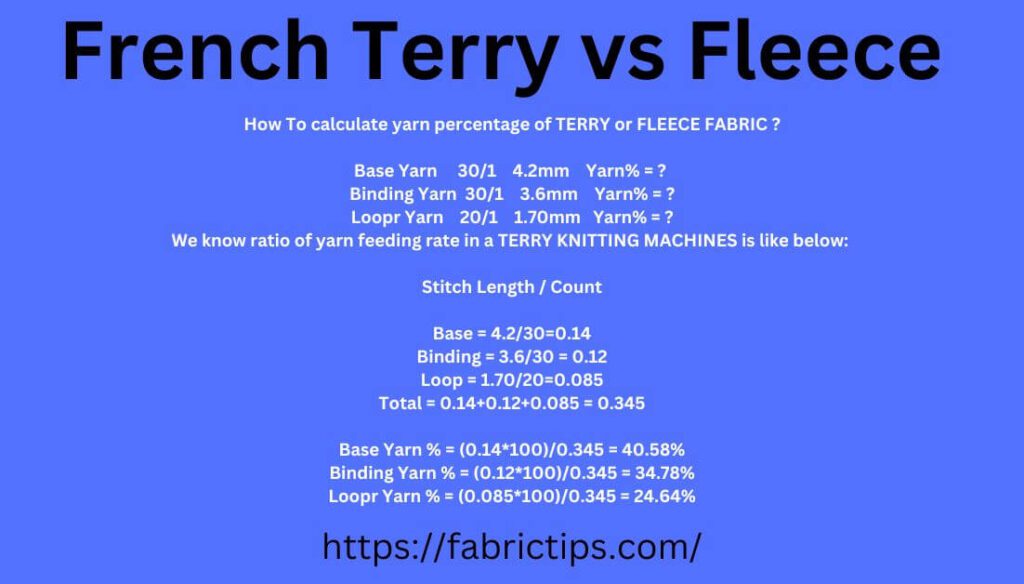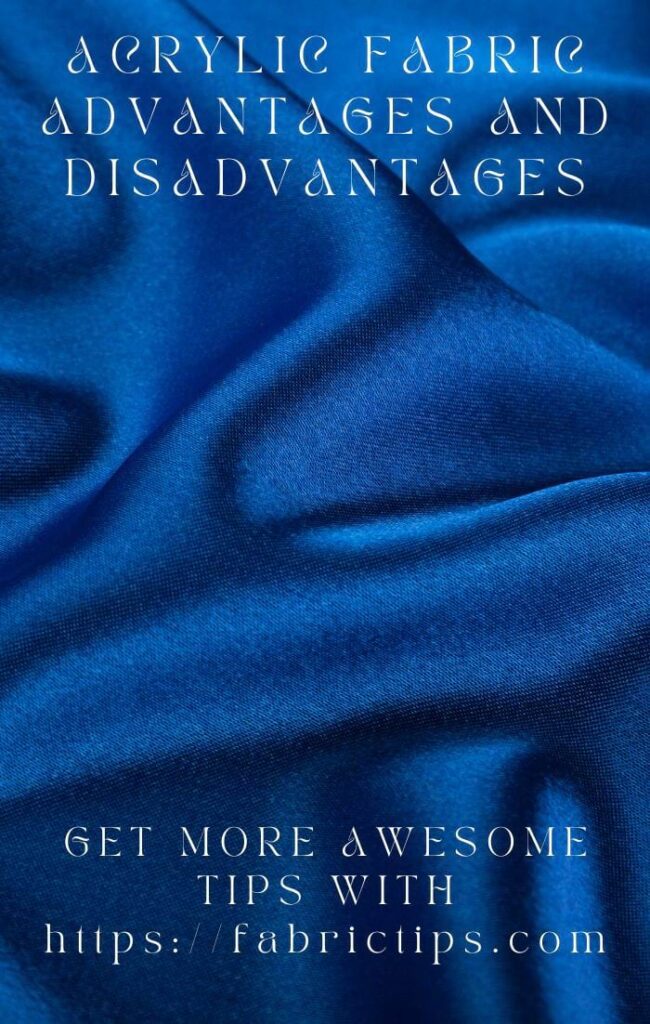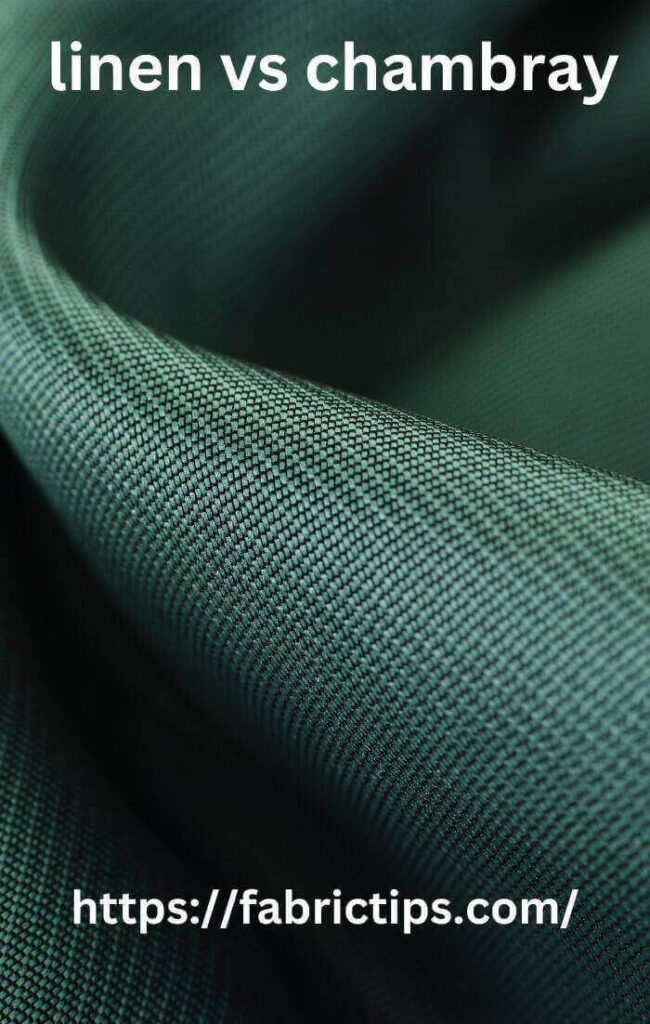Last Updated on December 13, 2025 by Wahid
Feeling the chill and craving comfort? You’re not alone! But when it comes to choosing the perfect fabric for your next cozy creation, two contenders rise to the top: French terry and Fleece. Both offer warmth and softness, but which one reigns supreme?
Here’s a quick view:
- French Terry: The champion of breathability and drape, ideal for a more comfortable and flattering fit, especially in warmer weather. It’s also less likely to pill but may not offer the same level of warmth as fleece.
- Fleece: The king of warmth and coziness, perfect for battling chills with its dense, plush construction. However, it can be less breathable and prone to pilling.
Remember, the best choice ultimately depends on several factors beyond fabric properties:
- Personal Preference: Do you prioritize warmth above all else, or do you value breathability and a more streamlined look?
- Style: Are you creating a cozy sweatshirt, a pair of joggers, or something else entirely? Each fabric lends itself to different styles.
- Activity Level: For intense workouts, French Terry’s breathability might be key. But for lounging or colder temperatures, Fleece’s warmth might be more desirable.
Dive into this French Terry Vs Fleece showdown and discover the champion for your next comfy masterpiece. In this guide, we’ll unveil the key distinctions between fleece and French terry, empowering you to choose the perfect fabric for your next cozy creation.
French Terry: The King of Casual Comfort
French terry, unlike its fleece counterpart, is a knitted fabric. This means the yarns are looped together, creating a smooth, flat surface on the outside and a soft layer of loops on the inside. It’s this looped back that provides French terry with its signature breathability and comfortable drape.
French terry comes in a variety of weights:
- Lightweight: Perfect for joggers, t-shirts, and lighter loungewear.
- Midweight: The most common weight, ideal for sweatshirts, hoodies, and comfy dresses.
- Heavyweight: Offers extra warmth for sweatpants and cozy winter accessories.
French terry can also have different finishes:
- Brushed: Similar to fleece, brushed French terry has a slightly fuzzy surface for added softness.
- Sheared: This finish creates a smoother, more polished look.
While cotton is the traditional material for French terry, blends with polyester or other synthetics are becoming increasingly common. These blends offer benefits like wrinkle resistance and improved durability.
Fleece: The Champion of Cuddle
Fleece is a soft, insulating fabric beloved for its cozy feel. It’s typically made through a process called napping, where the fabric surface is brushed to raise tiny fibers, creating that signature plush texture. This napping process also traps air, which is what makes fleece so effective at keeping you warm.
But fleece isn’t just one type! Here’s a breakdown of some popular varieties:
- Polar Fleece: The OG fleece is known for its lightweight warmth and versatility. It’s commonly used in sweatshirts, hoodies, and activewear.
- Sherpa Fleece: Think luxurious teddy bear coat. Sherpa fleece features a longer nap, creating a thicker, even more luxurious feel. It’s perfect for blankets, throws, and outerwear.
- Anti-Pill Fleece: A newer innovation, this fleece is treated to resist pilling, those annoying little balls of fabric that form with wear.
Fleece is most commonly made from synthetic fibers, with polyester being the king. However, you can also find fleece blends with cotton or other materials for a more natural feel.
Fabrics such as French Terry are more breathable, which keeps them cool. The French Terry fabric also wicks moisture and has been shown to hold 27% of the weight of the water it absorbs. Hence, it’s perfect to make sweat shorts.
French Terry Vs Fleece: Briefly Characteristics
I want to point out before we get into the discussion that both French Terry and Fleece fabrics are comfortable. You don’t need to spend hours figuring it out. The chart below can help you identify which fabric will suit your legs best.
| French Terry | Fleece | |
| Absorbance: | 27X weight in water | Yes |
| Fabric Makeup: | 100% Cotton/ Cotton/ Poly | 100% Polyester/ Cotton/ Poly |
| Fabric Weight: | Lightweight | Medium weight to heavy |
| Body Temp: | Keeps the body cool | Body warm |
| Inside: | Loops | Fuzzy |
| Wicks Moisture: | Yes | Yes |
| Laundry: | Can shrink | Can ravel/pill up |
| Durability: | Good | Excellent |
| Softness: | Very soft | Very soft |
| Best Season: | For summer | For winter |
| Comfortable: | Yes | Yes |
| Dries: | Longer | Quickly |
| Working Out: | Yes | Not ideal |
| Uses: | More versatile, and suitable for both summer & winter lounge wear | Lounge wear and cold weather outerwear |
| Cost: | Slightly higher | Slightly lower |
French Terry Vs Fleece: Overall Comparison
Generally, you may confuse fleece with French. However, they aren’t identical. Despite the similarities in their manufacturing processes, they differ in several ways, as we will explain below.
What Is French Terry?

If you want to know what French terry is, you have to learn about terrycloth first. The French terry cloth belongs to the category of terry cloths. In particular, Terry cloth wicks away moisture well & absorbs liquids easily. The yarn also features loops, offering a soft pile.
In the same manner, terry cloth and French terry are also similar. Only one side of the French Terry contains the same features. Alternatively, the fabric is flat and unlopped. Aside from this, French terry fabrics are stretchy, so they can be stretched as jersey terry cloths.
French terry can be classified as a lightweight to medium weight faIt can be used both for formal & casual occasions. The fabric is mainly used for pullovers, sweatshirts, hoodies, etc. Raw materials-wise, French terry consists mostly of cotton, but can also include organic soy, lycra, polyester, spandex, rayon, etc., along with cotton.
What Is Fleece?
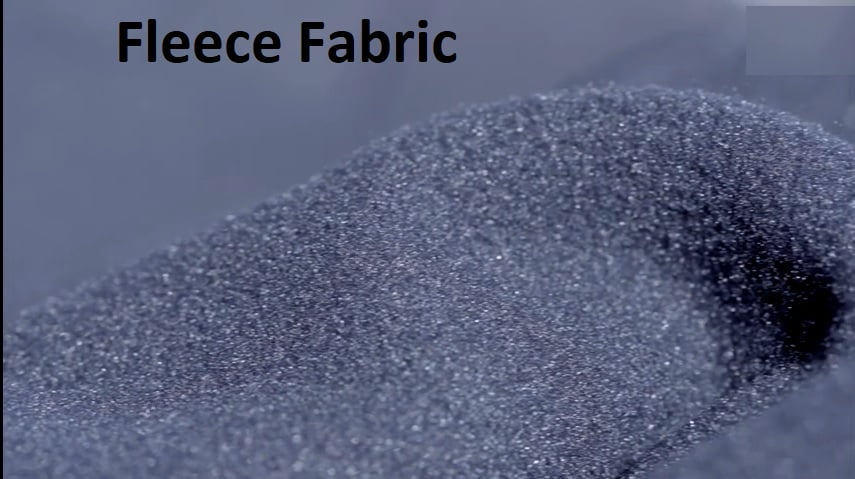
As we mentioned earlier, fleece falls under the knit fabric category. Therefore, fleece fabrics will also be used in lounge wear, similar to French terry. Apart from that, fleece fabrics are also used for sweatpants & sweatshirts.
Similar to French terry, this fabric has loops sewn inside the garment. This fabric, however, is made in a different way. To make the cloth soft and fuzzy, it is rapidly cut and shredded at the time of manufacturing.
By shredding the loops, smaller gaps appear between loops, resulting in a less breathable garment. However, the breath ability feature cannot be used to identify a specific fabric. French terry is often used on clothing whereas the fleece is also common, therefore it is very easy to confuse the two.
Knit Fabric: What Is It?

Fabrics knitted from yarns are known as knit fabrics. Let me explain. If you have ever woven fabric yourself, you are probably familiar with interlacing yarns. When it comes to handwoven clothing, the technique is the same. Similarly, knit fabrics have a similar mechanism for knitting. Although the yarns are so thin, you cannot handle them with your hands.
In reality, knit fabrics are modified versions of woven fabrics. Therefore, it’s more flexible due to its smaller number of intertwining loops. Due to its characteristics, this fabric is usually used to make hats, pajamas, socks, etc.
Uses Of French Terry

Bath towels and beach towels are usually made from French Terry, which is extremely absorbent. French Terry can also be used for making comfortable bathrobes, robes for swimming pools, and slippers. Fabrics like this can be used to decorate furniture such as rugs, cushions, & chair covers. However, French Terry highly absorbent properties also make it a popular accessory for sportswear, such as headbands. It is used for many baby products, such as washcloths, plush toys, and baby bibs.
Uses Of Fleece

Fleece is lightweight and durable, making it ideal for jackets, sweaters, blankets, & other items requiring warmth and dryness. Fleece is a common material used in outerwear for hikers and backpackers. The suits worn by deep sea divers and astronaut underwear are also made from fleece.
Moisture Wicking Performance
Obviously, regularly worn French terry and fleece are both extremely comfortable. They can, however, be used in any environment, for any purpose. Actually, these two fabrics don’t work as well as moisture-wicking fabrics. On this particular factor, French Terry would be the better choice. The loops in French terry are larger and can therefore hold moisture better than those in fleece.
In contrast, sweatshirt fleece is thickly layered with polyester fuzz. The fabric also features a thicker, closer-knit structure on the outside. There is little airflow, and it is difficult to wick moisture away. It will keep you warm since sweatshirt fleece is very thick, but you should probably avoid wearing it while exercising!
Warmth
The two fabrics are both best at providing warmth when compared with others. Still, their performance differs slightly. If you consider French terry to be lightweight or mid weight, it is obvious why fleece fabric is heavier. Therefore, French terry can give more room for breath ability. Besides, it’s also more moisture-wicking than other fabrics. There is simply no doubt that great French terry keeps you cooler.
Alternatively, fleece is not as breathable and does not wick away moisture well. Due to this, this fabric has lower airflow. For this reason, fleece fabric is better at keeping you warm. Nevertheless, one’s choice is dependent on several factors, including one’s personal preference and the weather. When you are warmer than others, French terry is recommended. If you are warmer than most people, fleece would be a good choice.
Softness
Fleece and french terry both have an extremely softer reverse side. French terry is made up of millions of threads intertwined almost invisibly, whereas fleece is a dense cut thread crisscrossing to create a soft finish similar to flannel.
What do you think is the softer fabric? The answer depends on many factors. In the back of hooded fleece, cut-off threads can create a velvety texture, as opposed to French terry’s thread loops. However, french terry typically contains cotton, which is actually softer than polyester, which is commonly used for hoodie fleece.
Regardless, you’ll find out both french terry & fleece are extremely soft and cozy!
Stretch
French terry and sweatshirt fleece are both 4-way stretch fabrics, which have the ability to stretch horizontally as well as vertically. Then again, fleece stretches equally horizontally & vertically, whereas french terry is more easily stretched horizontally.
Sweatshirt fleece provides some extra stretch over french terry. However, both fabrics offer a soft, supple feel making them suitable for lounge wear.
In both sweatshirt fleece & french terry, however, some manufacturers add an elastic band. A material with elastic fibers such as spandex, elastane, or lycra will stretch more!
Usage
In terms of its extensive uses, French terry offers a greater range of options. In contrast, fleece is primarily used for lounge wear or sweatshirts. French terry materials are ideal for covering your workout clothing. These materials keep you warm after challenging workouts. But that’s not all. French terry fabric can also be found in casual outfits. In most cases, people keep at least 1 French terry item in their closet.
As opposed to french terry, fleece fabrics are suitable for casual wear only due to their smaller loopholes. Due to its weight and thickness, this fabric cannot be used in formal settings. Therefore, one will very rarely see someone wearing a fleece-lined shirt or dress on a night out or business occasion.
Durability
The fleece found on sweatshirts usually has greater durability compared to french terry. However, both fabrics are durable over time.
However, french terry is prone to snag when washed due to the loops on the reverse side. Also, cotton is used, which is less durable than polyester.
Generally speaking, a sweatshirt fleece or french terry is supposed to last about the same period of time as a jersey knitted t-shirt. They should keep you warm for years.
Weight
In general, french terry is a medium-weight fabric, whereas fleece is a heavyweight material. In more technical terms, most fabrics and apparel will be listed by GSM formula (grams per square meter).
Sweatshirt fleece matters more in this regard. As an alternative to a t-shirt, hoodies are available, which come with ultra-lightweight 200 GSM hoodie fleece. Alternatively, you can also buy thick, heavyweight fleece hoodies to wear during the winter, up to 400 GSM. Fleece sweatshirts can have a wide range of weights.
As an alternative, French terry is often available in the standard mid weight thickness. While it is comfortable to wear at home, it isn’t suitable for wearing outdoors during extremely cold weather.
Easy Care
French terry and fleece are both fairly easy to care for. Both knit and sewn fabrics should always be hand washed with cold water to prevent shrinkage or skewing. Clothing can also be kept in shape by turning them inside out.
You should use a mild detergent for this type of clothing. Lastly, air dry the garments if possible. Should not be possible, you can tumble dry them without heat. Due to their knitted structures, these materials do not wrinkle, luckily, you don’t have to iron or steam them.
Cost
The cost of French Terry clothing is often higher than that of fleece. Obviously, clothing costs vary depending on factors such as the brand as well as the fabric’s size. However, french terry is more expensive because it typically contains cotton, a more expensive fabric than polyester.
To top it off, depending on what type of cotton is used, french terry might be quite expensive. French terry fabric may be manufactured using combed Turkish yarn, a method for making cotton that is soft & absorbent.
Note that cotton yarns that are ring-spun and open-ended are less expensive but will not be as luxurious.
French Terry: Pros & Cons

French terry takes the crown for breathability and comfort in warmer weather. Here’s what makes it a contender:
Pros:
- Breathable Bliss: The looped construction of French terry allows for better airflow, preventing you from feeling stuffy. It’s a great choice for joggers, loungewear, or even lighter-weight sweatshirts for those cool summer nights.
- Moisture Management: French terry is more moisture-wicking than fleece, making it suitable for light activity. It can help keep you feeling fresh during a brisk walk or yoga session.
- Drape for Days: French terry’s smooth outer face drapes beautifully, creating a more flattering silhouette compared to bulkier fleece. This makes it a great choice for joggers, dresses, and other garments where a more relaxed look is desired.
- Pilling Resistance: French terry is generally less prone to pilling than fleece, thanks to its smoother construction. This means your favorite French terry pieces can stay looking pristine for longer.
However, French terry does come with a few considerations:
Cons:
- Warmth Woes: While comfortable, French terry isn’t as insulating as fleece. If you’re seeking the ultimate warmth for battling harsh winters, fleece might be a better choice.
- Price Point: French terry can be slightly more expensive than fleece, especially for higher-quality cotton blends.
Fleece: Pros & Cons

Fleece is the undisputed champion of warmth and comfort. Here’s why you might fall in love with it:
Pros:
- Warm and Cozy: The dense construction of fleece traps air effectively, making it ideal for battling chills. Snuggle up in a fleece blanket or sweatshirt and feel the toasty embrace.
- Soft and Comfortable: The napped surface of fleece feels incredibly soft against the skin, making it perfect for lounging or cuddling.
- Easy Care: Fleece is generally machine-washable and dries quickly, making it a low-maintenance choice.
- Variety is King: Fleece comes in a vast array of colors, patterns, and thicknesses, allowing you to personalize your cozy haven.
However, fleece isn’t without its drawbacks:
Cons:
- Breathability Blues: Fleece’s tight weave can trap sweat, making it less ideal for high-activity situations. You might end up feeling a bit stuffy during intense workouts.
- Pilling Woes: Over time, fleece can develop those annoying little fabric balls called pills. While anti-pill varieties exist, traditional fleece might require extra care to maintain its smooth look.
- Bulk Factor: Depending on the thickness, fleece can be bulky, making it less suitable for garments requiring a more streamlined silhouette.
In conclusion, both French terry and Fleece offer distinct advantages. Deciding between them comes down to your needs. If warmth is your top priority, fleece reigns supreme. But if breathability, drape, and a more polished look are important, French terry might be your perfect match.
Fleece Vs French Terry: Which Is Better?
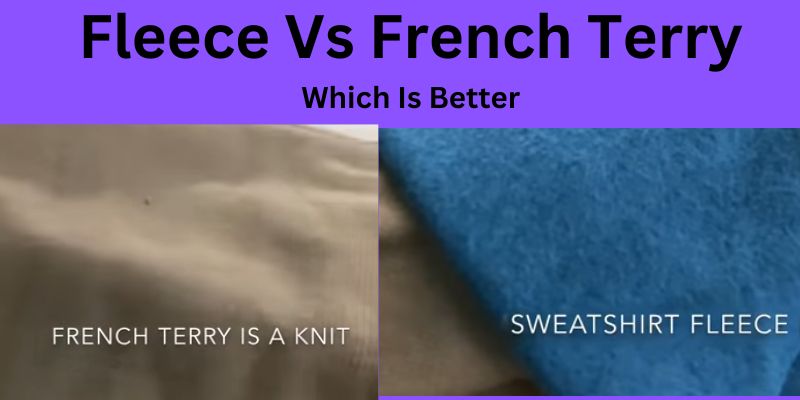
If you want a terry material or fleece shirt, it depends on what kind of fabric you want. This fabric is great for lounge wear in the winter & summer, as well as for bathrobes. Winter sweatshirt fleece keeps you warm while feeling soft too!
For something to wear during the summer, while working out, or after you take a bath, you may want to consider french terry. As an alternative to thick sweatshirts for blocking cold winds, if you want to relax in the middle of winter, a sweatshirt fleece may be for you. Furthermore, French Terry tends to be pricier compared to sweatshirt fleece, so if you are on a budget, you should pick hoodie fleece.
French Terry Vs Other Fabric
What are the differences between French terry and similar fabrics? Even though it is popular in lounge wear, French terry is little known to the general public. Most likely, this is because the fabric is easily confused with other materials, especially terry cloth.
French Terry Vs Velour
While French terry & velour are both used in clothing, they are constructed differently. French terry is a knit fabric made up of loosely woven cotton loops on the back side. Velour is a fabric that is woven from a plain or satin weave of parallel threads. The reverse side of the material is slicked across to create a soft pile.
Elastic fibers are typically used in Velour, making it very stretchy. However, it does not absorb moisture the way french terry does. Velour may seem like “fake velvet,” since it does appear velvety.
It is popular to manufacture bathrobes & lounge wear using both materials.
French Terry Vs Cotton
But French terry is among the softest and warmest materials made from cotton. This kind of material is just as stretchy as jersey knit cotton. The plain weave cotton you’d find in bed sheets is even warmer and softer than this kind.
Cotton fibers are usually used for French terry. However, cotton remains a popular material worldwide. Suitable for a variety of materials, such as french terry, jersey knit and denim.
French Terry Vs Terry Cloth
There are a number of key differences between French terry & terry cloth, among them the fabric’s construction. In contrast to french terry, terrycloth does feature an over-under weave. Although this material is made from a special type of weave that creates lots of loose thread loops. Consequently, Terry cloth is extremely absorbent.
Almost every towel and washcloth has come from Terry’s cloth. Formerly, this fabric was only made out of cotton, but nowadays, polyester is also available at cheaper prices.
FAQs
01. Is terry cloth or fleece warmer?
Answer: The French Terry fabric keeps you warm, right? Yes, the French terry fabric keeps you warm, but I would say it will offer you the best warmer feels compared to other fabrics. Many t-shirts are made of material that keeps you warm, but also keeps you cool, like sweatshirt fleece.
02. Does French terry get too hot during the summer?
Answer: The cotton is soft & stretchy, as well as being the perfect fabric for winter garments. Moreover, French terry has a high degree of breath ability, so you won’t feel too hot and sweaty wearing it. During the summer, French terry makes a great summer fabric choice.
03. What is the best method for washing French terry?
Answer: Firstly, because terry cloth is usually made from 100% cotton, it is machine washable and dryer friendly. Secondly, since it is 100% cotton, the fabric will shrink during the first washing cycle.
04. Does Terry cloth contain polyester?
Answer: In its simplest form, terry cloth consists of tightly woven loops capable of absorbing large amounts of water. As far as quality is concerned, the fabric either contains polyester or is 100% cotton.
05. Is fleece able to absorb moisture?
Answer: Because fleece is so durable, it is extremely useful. It has a similar feel to wool, however it is much more lightweight in weight. Due to its polyester composition, fleece doesn’t absorb moisture, absorb odors or degrade rapidly. As a result, fleece is an excellent insulation material.
06. Why is French terry called that?
Answer: With its origin in French “tirer,” which means “to pull,” towels have become a major mass production product.
07. What happens if you are wet and wearing fleece?
Answer: The benefits of fleece & wool are that they are warmer, best water-repellent, stay warm even when wet, and wick away moisture more efficiently than cotton.
08. Can fleece keep you warm in the winter?
Answer: During the winter months, fleece is closely associated with warmth. It’s an extremely comfortable and lightweight fabric, making it ideal. Basically, this fabric is great for casual, everyday jackets and coats that keep you warm while you are out and about.
09. How do French Terry & Jersey differ?
Answer: A French terry is characterized by a medium weight knit that has distinct loops (like loose cords) on one side and is smooth on the other. The result is a fabric that is warmer and heavier than a single jersey, though often less stretchable.
Finally, French Terry Vs Fleece? It’s Your Choice!
The battle between French Terry Vs Fleece has come to a close, but the true victor is you. Now armed with the knowledge of their key differences, you can confidently choose the fabric that best suits your needs.
Yes, both are popular choices for cozy clothing, but their subtle differences can make a big impact on the final product. Fleece, known for its plush texture, is a staple in sweatshirts and blankets. French terry, with its smooth outer face and looped interior, offers a lighter feel and is often used in joggers and loungewear.
Finally, using these factors and the information provided, you can make an informed decision and choose the perfect fabric for your next cozy creation. Happy crafting!
